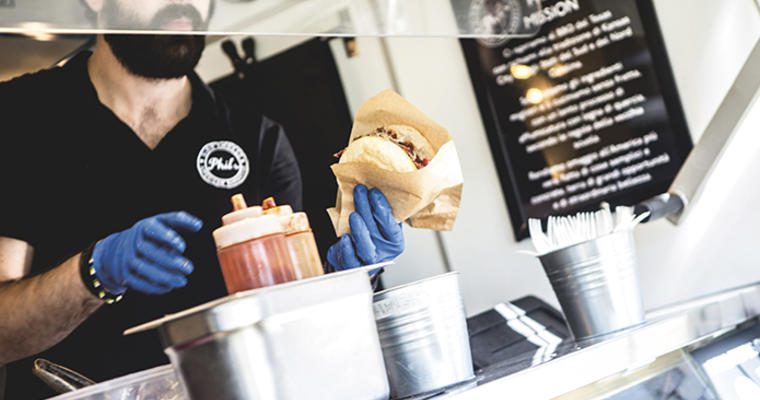It can be a challenge for a kitchen to comply with all required food safety standards. But things can get even more complicated when moving food away from the kitchen and serving it out of a food truck, at an outdoor fair or other festivity away from your operation.
Luckily, food safety is not impossible to do. Keep these five things in mind and you can safely serve delicious food just about anywhere.
1. Maintain time and temperature control
Some foods require time and temperature control in order to safely avoid bacterial overgrowth and the spread of foodborne illness. These are known as Time/Temperature Control for Safety (TCS) foods and include items such as eggs, meat, poultry, seafood, dairy products, cut tomatoes and melons, rice and beans. If you are transporting a TCS food, you should keep it out of the temperature danger zone by using the appropriate holding equipment. Cold foods should be held at an internal temperature of 41°F (5°C) or below and hot foods should be held at an internal temperature of 135°F (57°C) or above. Check the internal temperature of TCS foods before delivery. Also, try to minimize the amount of time food is held by dropping it off as close to the service time as possible and picking it up immediately after service. Shelf-stable foods, like cereal bars and muffins, do not require temperature control.
2. Prevent cross-contamination
Cross-contamination occurs when bacteria or other microorganisms are unintentionally transferred from one substance or object to another. To prevent this, use serving utensils and single-use disposable gloves to serve food. Also, consider using pre-portioned or wrapped items so customers can grab and go without the fear of contamination. When transporting food, never place carriers on the ground; keep them up on chairs or tables.
3. Clean and sanitize food-contact surfaces
Any surface where food will be served or consumed should be properly cleaned and sanitized before meal service, including carts, utensils, equipment, tables and serving stations.
Proper Cleaning and Sanitizing Steps
- Wash with a detergent solution.
- Rinse with clean water.
- Sanitize using a sanitizing solution mixed at a concentration specified on the manufacturer’s label.
- Allow to air dry.
4. Encourage hand washing
Hand washing is one of the most effective ways to prevent the spread of infection and foodborne illness. All staff should wash their hands before and after meal service.
Proper Handwashing Steps
- Wet your hands with running water as hot as you can comfortably stand (at least 100°F, 38°C).
- Apply soap.
- Vigorously scrub hands and arms for at least 20 seconds. Clean under fingernails and between fingers.
- Rinse thoroughly under running water.
- Dry hands and arms with a single-use paper towel or warm-air hand dryer.
5. Have a plan for leftovers
Determining whether leftovers may be served again will depend on your location and the regulations enforced in your area. Contact your local health department and state agency to discuss whether, and how, to handle leftovers. As a general rule, throw away all perishable foods that have been at room temperature for more than 2 hours (1 hour if the temperature is over 90°F). Also, try limiting the amount of leftovers by:
- Forecasting the amount of food you will need for each meal. Minimize leftovers and food waste by adjusting future meals based on how much goes uneaten.
- Taking into account food quality, as some foods aren’t appealing when served again.











